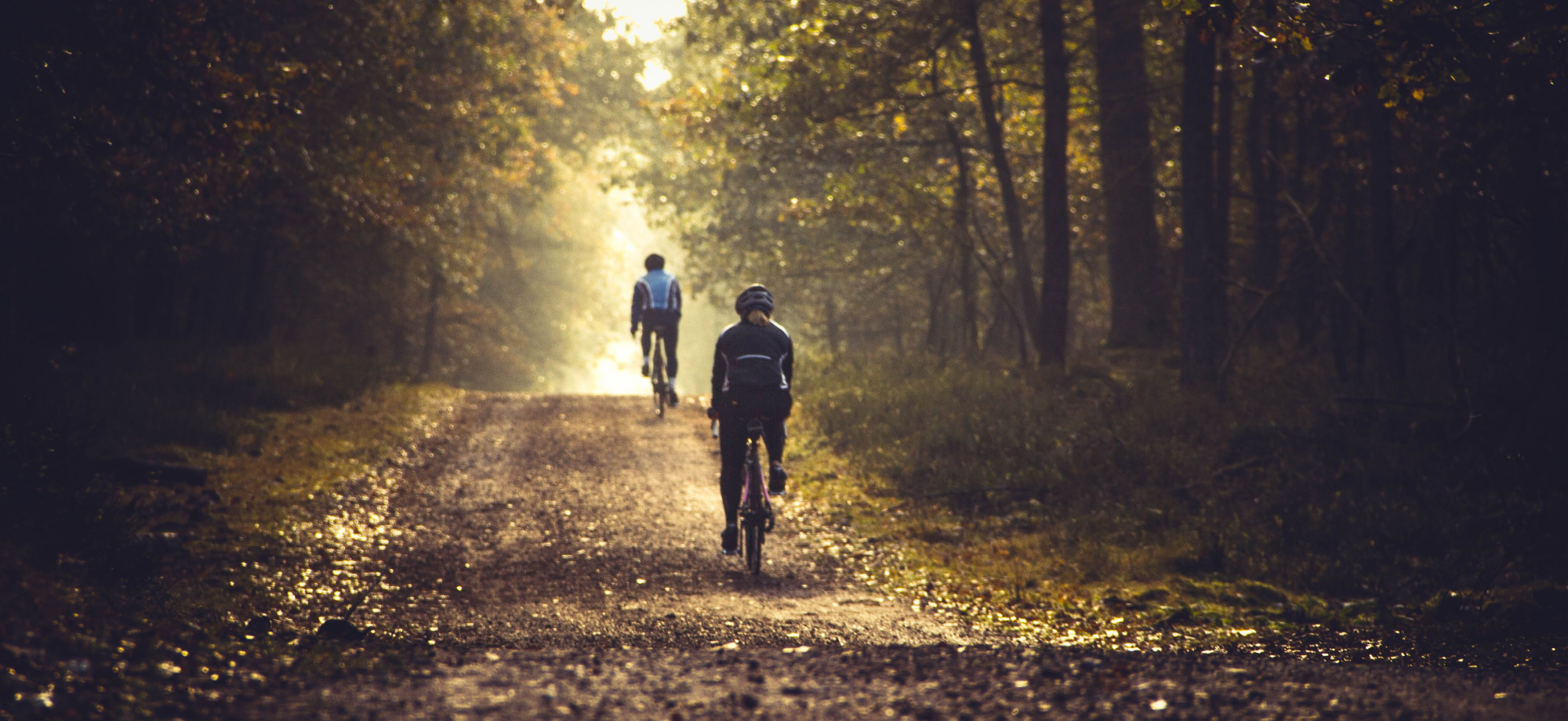How To Set Up Your Gravel Bike for Winter
Gravel bikes' utility make them the ideal winter machine

Dark skies, inclement weather, and wet roads herald winter's arrival. Training through it means confronting the year's most epic conditions head on. While other folks stow their road bikes onto turbo trainers, you're dusting off lights and fenders and shoe covers. You've got a gravel bike, and now is its time to shine.
The characteristics that distinguish gravel bikes from road bikes are all the things you'd want for wintertime riding. Disc brakes that stop no matter how soaked they get. Frame routing for dynamo-powered lights and braze-ons for lights and fenders. Frame clearance for fat tires even with the fenders on. And those tires, too, with tread measured in inches and traction all day long. Tires that empower you to ride levees and gravel backroads when the rain is driving and visibility is low and the blacktop is more hazardous than ever.
If you've never ridden your gravel bike through the winter, here are a few modifications to get you started on the right foot. And be sure to check out our guide for winter outfitting.
Be Ready For Wet

Winter rain and snow can make roadways nasty. Your gravel bike's wide tire patch will pick up significant portions of that nasty and spray it all over your shoes, torso, backside, and face. Bike manufacturers know this, so virtually every gravel bike is equipped with mounts for fenders. And with disc brakes coming standard, you can fit as wide a fender as your fork and seatstay will clear! The fender will redirect spray away from you and also away from anyone who happens to be riding behind you.
You also might want to consider a different tire for winter. Wide tires inflated to lower pressures will provide better traction than skinnier tires at high pressures, but there can be a tradeoff with very wide tires in very wet conditions. If you intend to ride a wide tire in extremely wet conditions, think about installing ones with a tread pattern designed to channel water away from their contact surfaces. If you're eyeing sloppy backroads, consider a tread pattern designed to shed mud. In either case, you also might want to go tubeless if you haven't already--you don't want changing a tube in the freezing rain and wind to be the most challenging part of your ride!
Finally, be sure to use chain lube that's meant for wet conditions. Wet lubricants go on wet and will stay wet to repel water, protect against rust, and keep your drivetrain smooth and silent. Your chain and cogs will thank you come summer.
Be Ready For Dark

In winter the days are shorter, the sun is lower in the sky at higher latitudes, and overcast skies reduce visibility even further. Lights fore and aft can help other road users see you in winter conditions. These can be rechargeable lights that clip onto your handlebar and seatpost, or something more reliable like a dynamo-hub powered setup, which generates electricity when your wheel spins to power head and tail lights.
Be Ready For Cold

If you live in a place where the temperature really drops, or if you ride dawn patrol, there are ways to set up your gravel bike to make riding in the bitter cold more comfortable and safe. A set of pogies on your handlebars will keep your hands warmer than if you wore bulky ski gloves, and give you just as much lever and shifter control as you have on a summer's day. Similarly, there are many styles and colors of sticky, textured bar tape to help keep you planted and securely swapping hand positions no matter how numb your fingers feel, or how wet your bars become.
Check out our guide to Cold Riding Layering Basics.
Be Ready For Mud

Muddy backroads can provide a fun, if messy, challenge. Swapping to knobby tires will help you find the traction you need to confidently ride muddy features and climb surfaces that will set slick tires spinning. And when you start down from the top of the climb, a dropper post can enhance your bike control and safety when descending sloppy tracks. Unlike a road bike, your gravel bike is likely made with a seat tube that's both short and wide enough to accommodate installing a dropper post. And with many gravel bikes running 1x drivetrains, there's an opportunity to install a dropper lever to your cockpit without adding clutter. Just use it to lower your saddle at the beginning of your descent and let it rip!
One Last Thing

All this readiness is going to require extra layers for rain and wind, extra gear for lighting your way, and a dry place to store it all. If you don't already have a frame bag for your gravel rig, it's a great investment for wintertime riding. You can pack extra clothing, gear, and food in a right sized frame bag. Some gravel bikes even come with braze-ons for you to bolt frame bags directly to your top tube and seat tube!


